Fantasy football 2014 draft strategies: Two-quarterback leagues
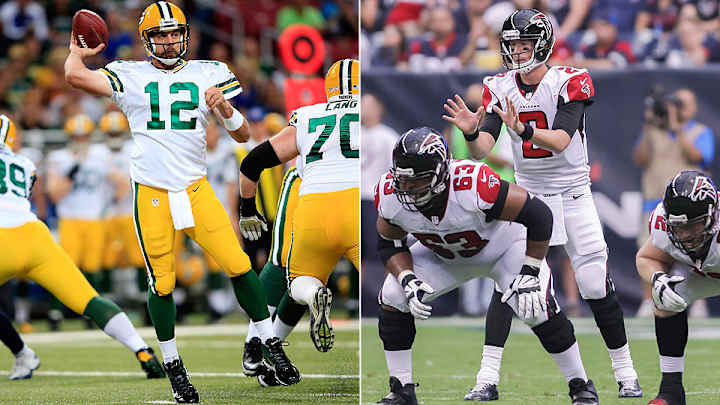
It’s impossible for fantasy owners to ignore the league-wide shift to high-volume passing offenses. Peyton Manning is coming off a season previously attained only by obsessive Madden players. When he broke Tom Brady’s single-season touchdown record and Drew Brees’ single-season yardage record last year, he was surpassing marks that were six and two years old, respectively. Of the top-10 single-season passing touchdown outputs, seven have taken place since 2004. The yardage boom is even more acute, as all of the top five and eight of the top 10 season totals have happened since 2011. Even though Julio Jones missed 11 games, Matt Ryan threw for more yards last year than Brett Favre ever did in a single season of his career.
MORE: Complete Fantasy Football preview | Fantasy five-minute guide
Fantasy football debate: Is Aaron Rodgers or Peyton Manning top QB?
and I conducted a
12-team, 14-round mock draft that was recently published on SI.com
. We used the most common starting lineup you’ll encounter in fantasy leagues: one quarterback, two running backs, two receivers, one flex, one tight end, one kicker and one defense/special teams. A total of 15 quarterbacks were selected. They did not include the following:
• Andy Dalton, who was the fourth-highest scoring quarterback in standard leagues last year, trailing Cam Newton by just 0.8 points.
• Russell Wilson, who ranked eighth among quarterbacks in fantasy points, helped guide the Seahawks to the Super Bowl and should have the ball in his hands more often this season.
• Alex Smith, last year’s 13th-highest-scoring quarterback, who had 23 touchdowns against just eight interceptions and ran for 432 yards.
Fantasy football 2014 draft preview: Players in contract years
• Ryan Tannehill, who put up nearly 4,000 yards in his second season in the league while playing behind a terrible offensive line.
• Josh McCown, who ranked third in points per game at the position, trailing only Manning and Brees, and now has a starter’s job all to himself in Tampa Bay.
These are players who should, at the very least, be drafted in fantasy leagues. And yet, in standard one-quarterback leagues, there’s little reason to go after someone like the quarterbacks above when you can be supplementing your running back and receiver depth. It’s time to make these guys fantasy mainstays. The best way to do that is with a two-quarterback league.
Two-quarterback leagues are completely different than your traditional single-quarterback league. The reason for this is obvious. Owning two quarterbacks is no longer a luxury. It is a necessity. In fact, you’ll likely want to come out of your two-QB draft or auction with at least three signal-callers. Of course, that means you’ll need a completely different strategy to put together a winning roster.
1. Discard your usual rankings
You know all those rankings and average draft position statistics you’ve been looking at since the start of the summer? Forget about them in a two-QB league. Quite simply, they have no bearing. You’re going to have to completely rethink the way you value players and positions.
This should be obvious, but quarterbacks are significantly more important in the two-QB format. In a one-QB league, you might see a quarterback taken in the first round, though the first passer probably wouldn’t be off the board in the second round. In two-QB leagues, Aaron Rodgers, Manning and Brees will likely all be gone within the first six or seven picks. And they should be.
It doesn’t stop there, though. You’ll likely see at least five quarterbacks selected in the first two rounds and 10 in the first three. Getting at least one quarterback you can hang your hat on is crucial in any two-QB league. Those cheat sheets pushing quarterbacks down into the depths of the middle rounds just won’t do in this format.
2. Patience is not a virtue, unless it is
I’ve written in many places on SI.com this summer that if you don’t get Rodgers, Manning or Brees in normal leagues, you might as well wait until you’re one of the last owners in your league to take a quarterback. You cannot afford that sort of patience in two-QB leagues.
Fantasy football 2014 draft preview: Players with a high risk of injury
The quarterback crop starts thinning out early, and if you don’t get involved, you’re going to be scrambling at the position all year long. Seasoned fantasy players will always be tempted to wait on quarterbacks. It’s practically in our DNA. But unlike in one-quarterback leagues, you can’t have it all in two-QB formats. You’re going to have to make an uncomfortable selection of a quarterback at some point. If you wait too long, that could become so uncomfortable that it proves your team’s undoing. You don’t want to end up with Alex Smith, Joe Flacco and Geno Smith as your quarterbacks.
2014 Fantasy Football Sleepers Vol. 2
Jeremy Hill - RB, Cincinnati Bengals
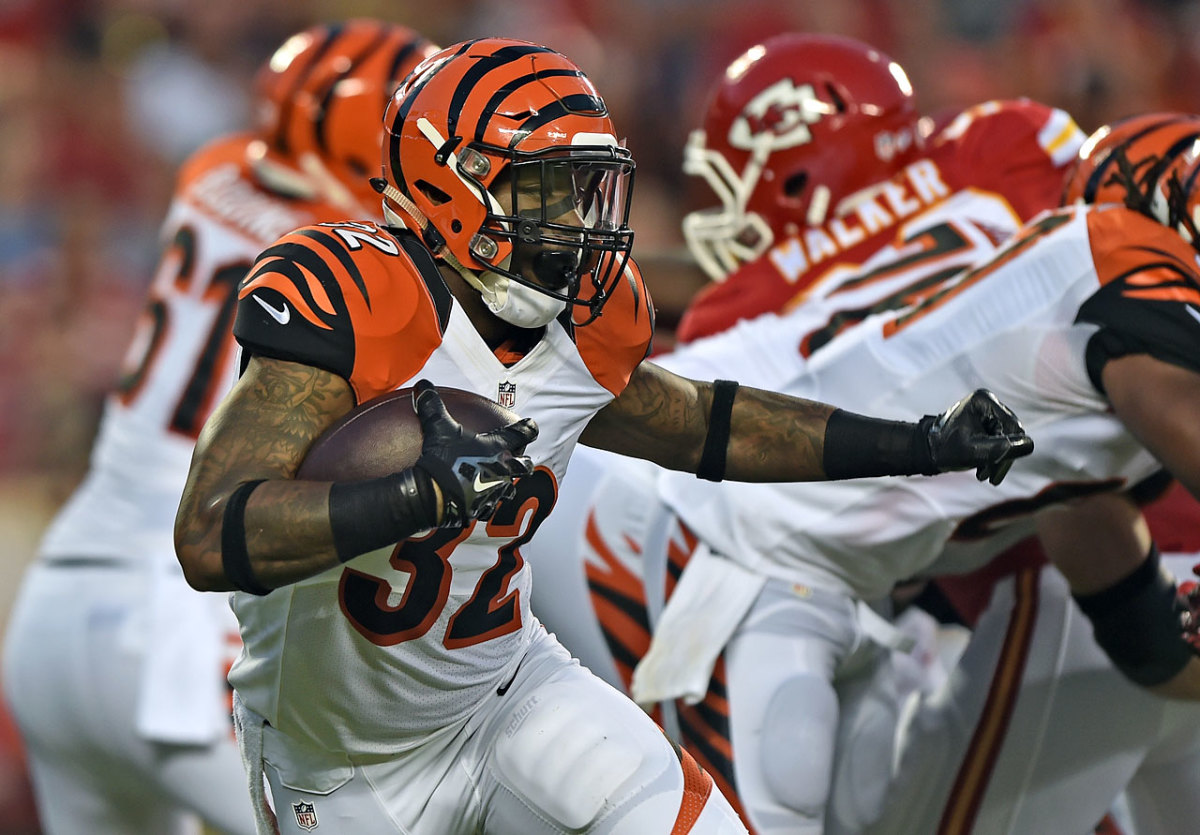
Hill is the new power back to compliment Giovani Bernard in Cincinnati. The second-round rookie should play a role similar to BenJarvus Green-Ellis last season but with significantly more upside.
LeGarrette Blount - RB, Pittsburgh Steelers
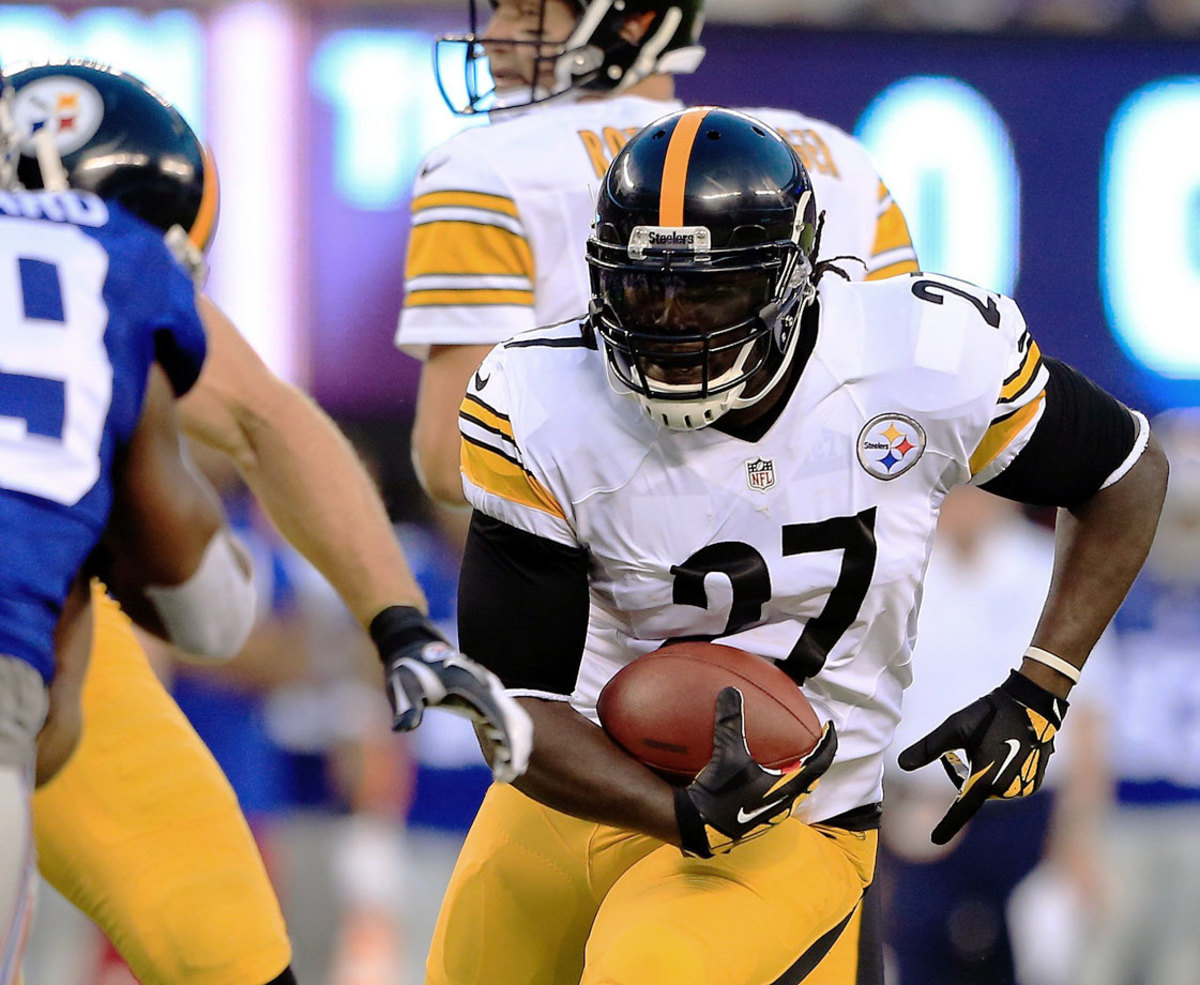
Blount averaged five yards per carry last season in New England and his style translates perfectly to Pittsburgh’s smash-mouth style. He’s one Le’Veon Bell injury away from being a fantasy asset.
Storm Johnson - RB, Jacksonville Jaguars
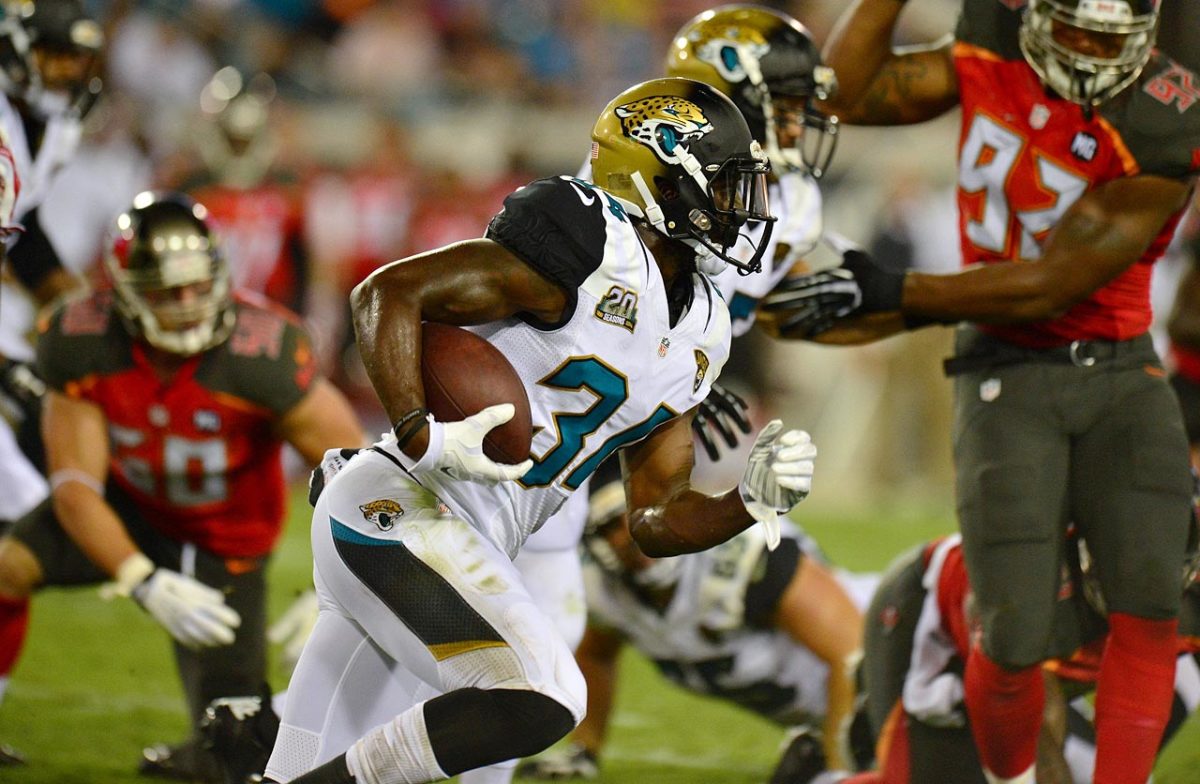
Toby Gerhart is a true three-down back but he had better perform in his first season as a starter, because Johnson will be waiting for his chance. The talented rookie from UCF has the tools to emerge as a capable fantasy option.
Latavius Murray - RB, Oakland Raiders
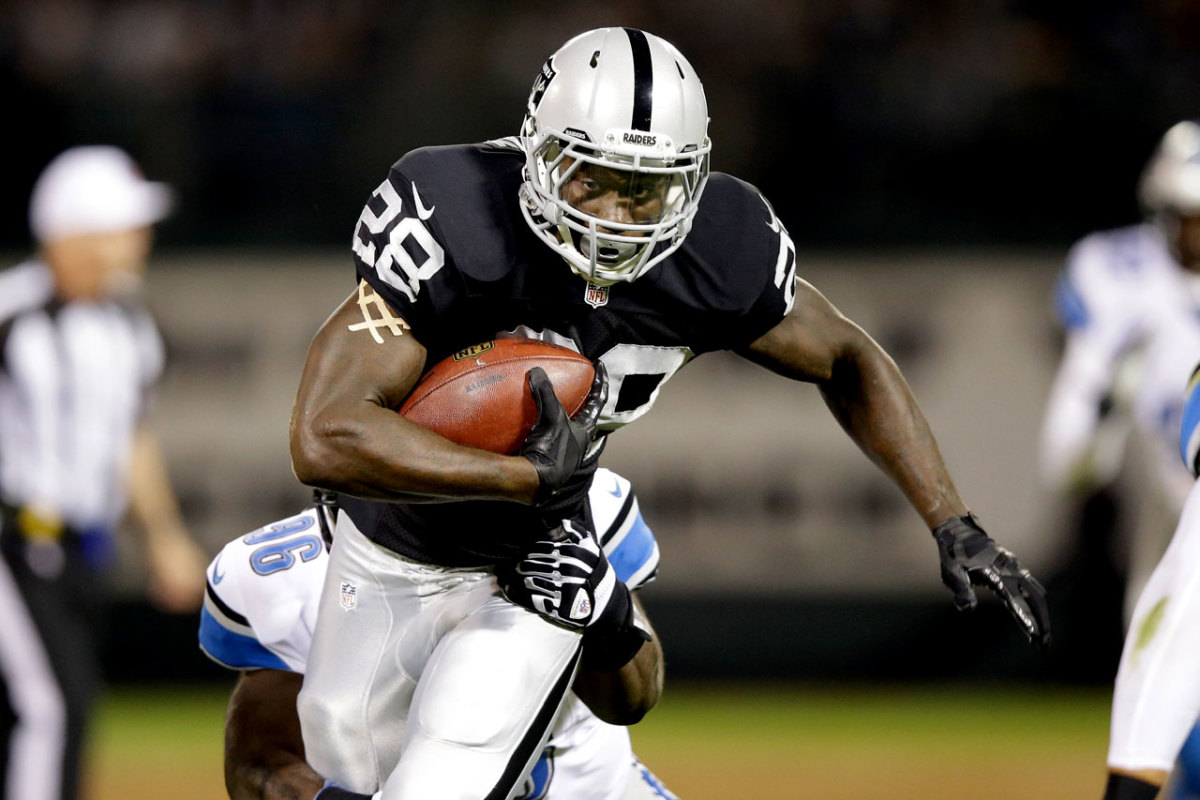
Murray is only draftable in extremely deep leagues, but he’s a talented runner who is backing up two injury-prone veterans on the depth chart. Keep an eye on him if Maurice Jones-Drew or Darren McFadden goes down with an injury.
Darren Sproles - RB, Philadelphia Eagles
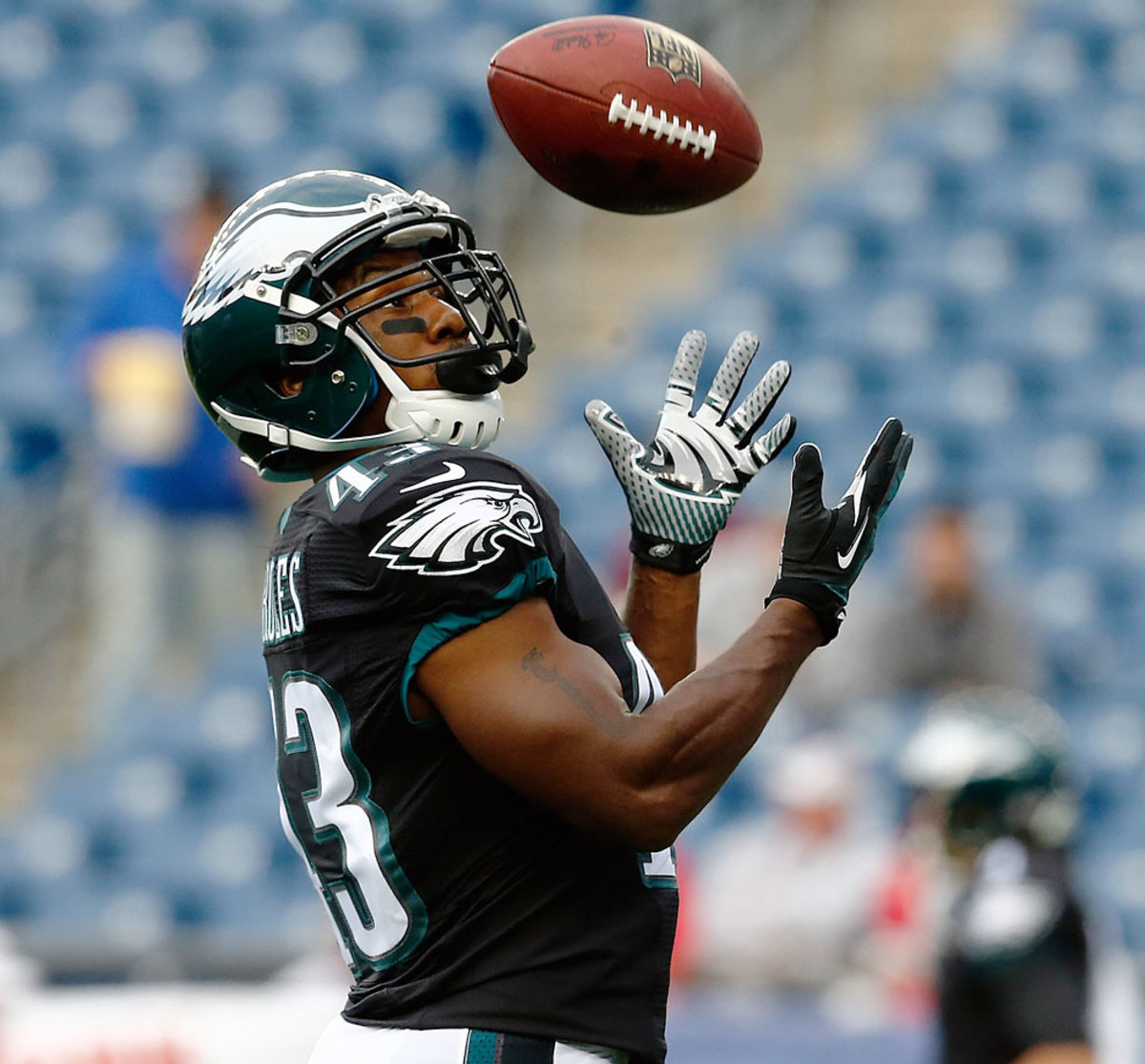
Sproles has caught at least 70 balls in each of the last three seasons and moved to Chip Kelly’s pass-happy offense in Philadelphia. He’s a big-play threat who should outperform his average draft position, especially in PPR formats.
Mark Ingram - RB, New Orleans Saints
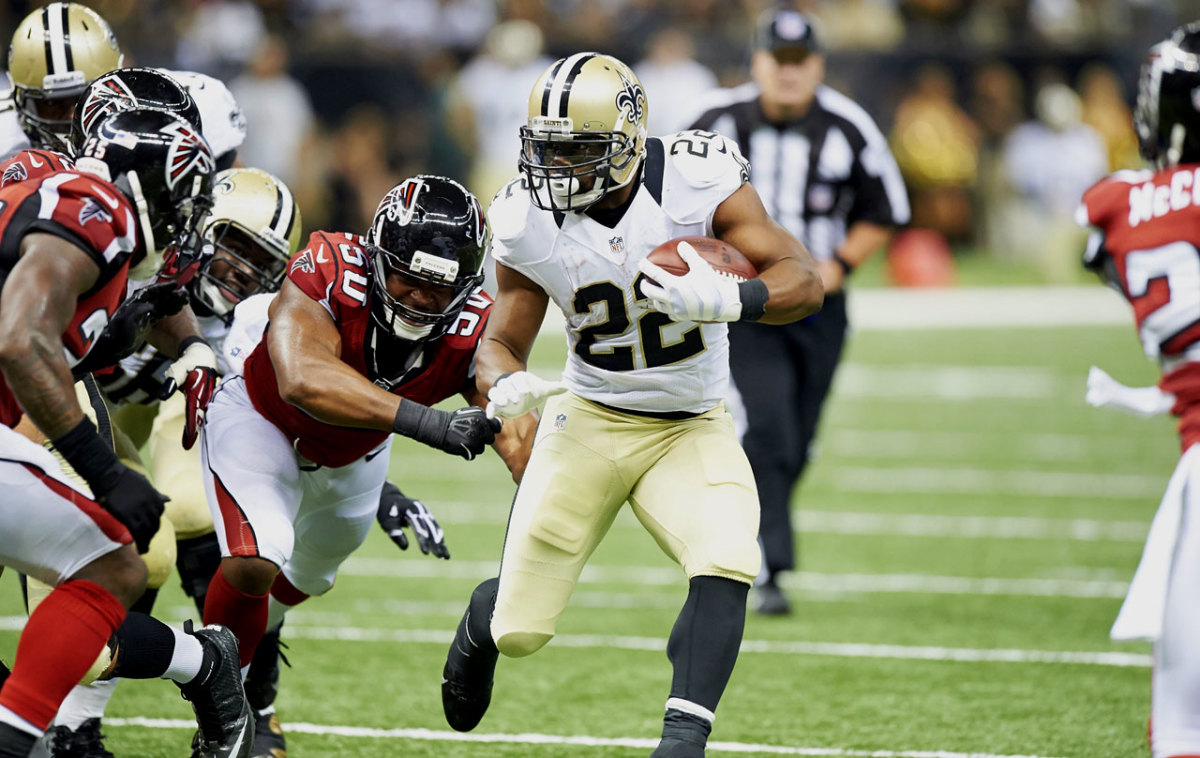
Will this be the year that the 2009 Heisman Trophy winner breaks out? It could be, with Darren Sproles out of town and Pierre Thomas falling down the depth chart. Ingram is still only 24 years old and has the tools to be a fantasy star.
Jonathan Grimes - RB, Houston Texans
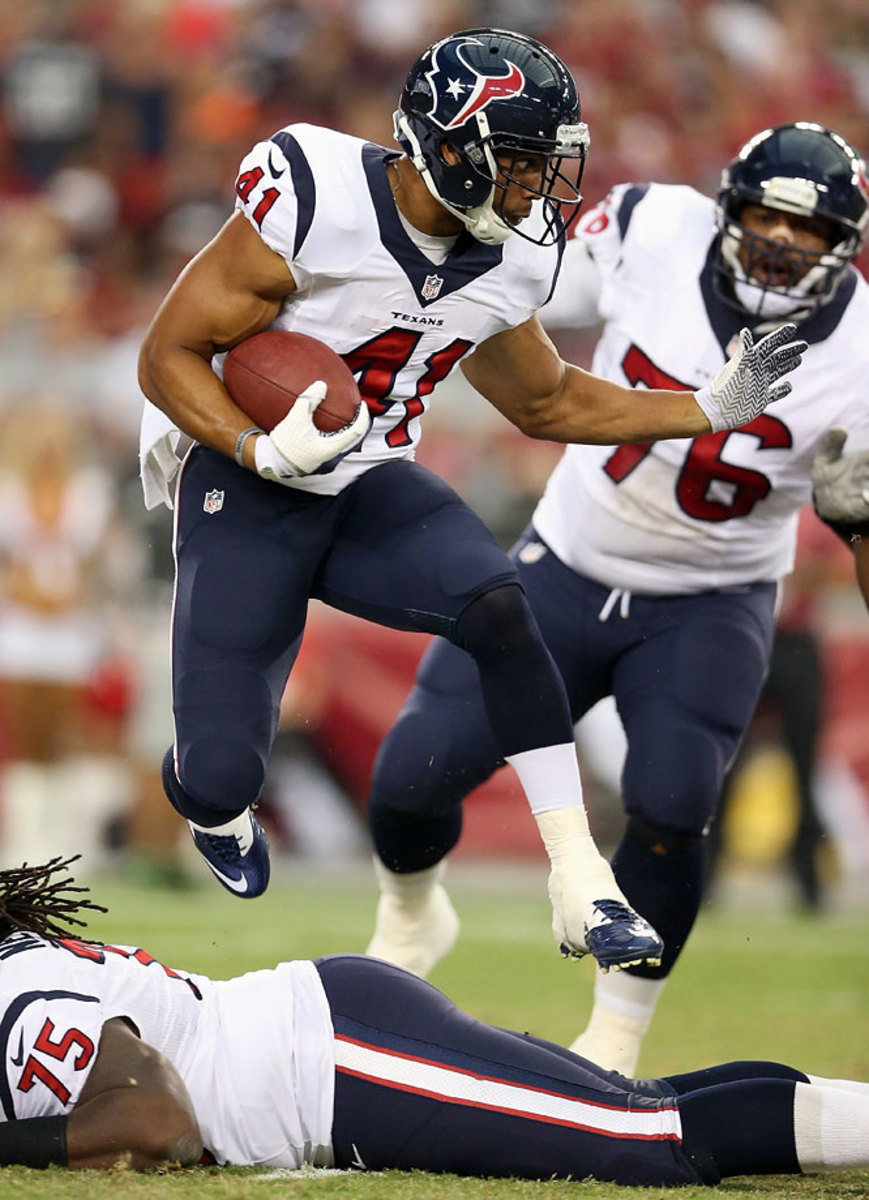
Grimes is emerging as the primary backup to Arian Foster with a nice training camp. Fantasy owners know all about Foster’s injury history and his backups tend to make an impact at some point during the season.
James Starks - RB, Green Bay Packers
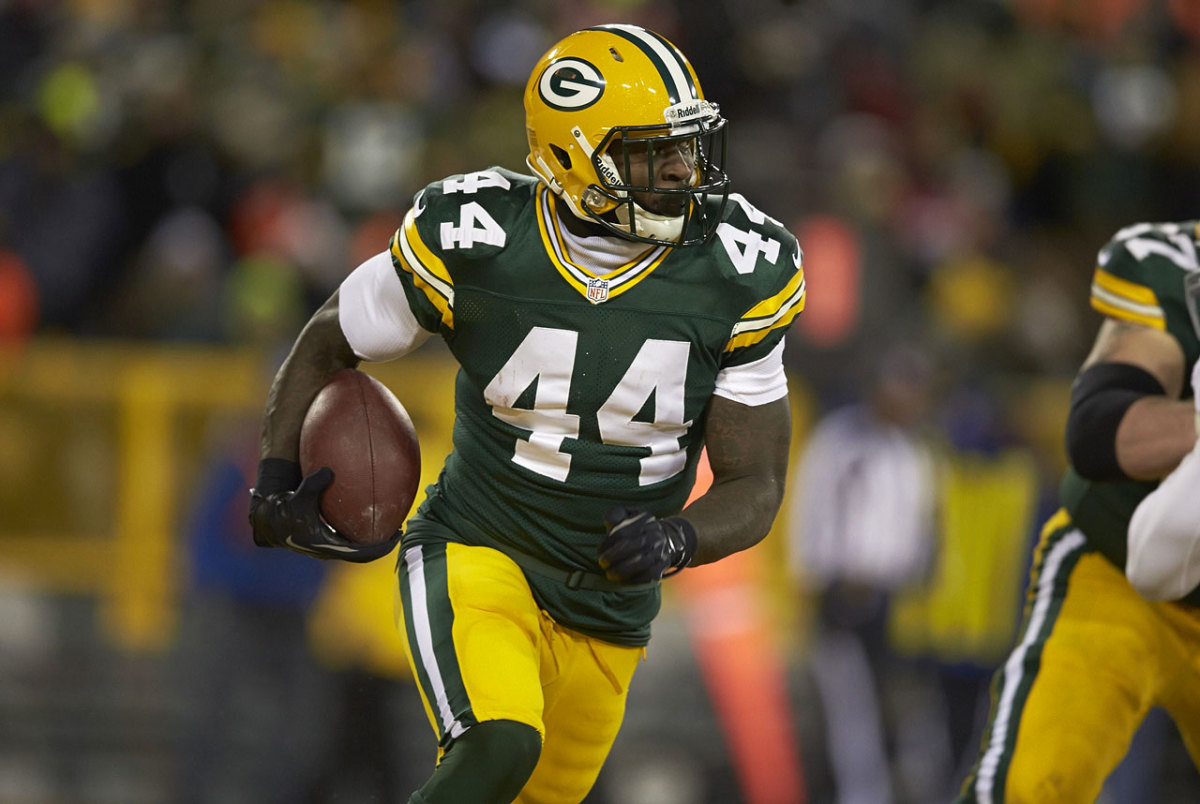
Starks averaged 5.5 yards per carry last season and is a must-own handcuff for all Eddie Lacy owners. Starks instantly becomes a high-end RB2 in all leagues if Lacy goes down at any point.
Andre Williams - RB, New York Giants
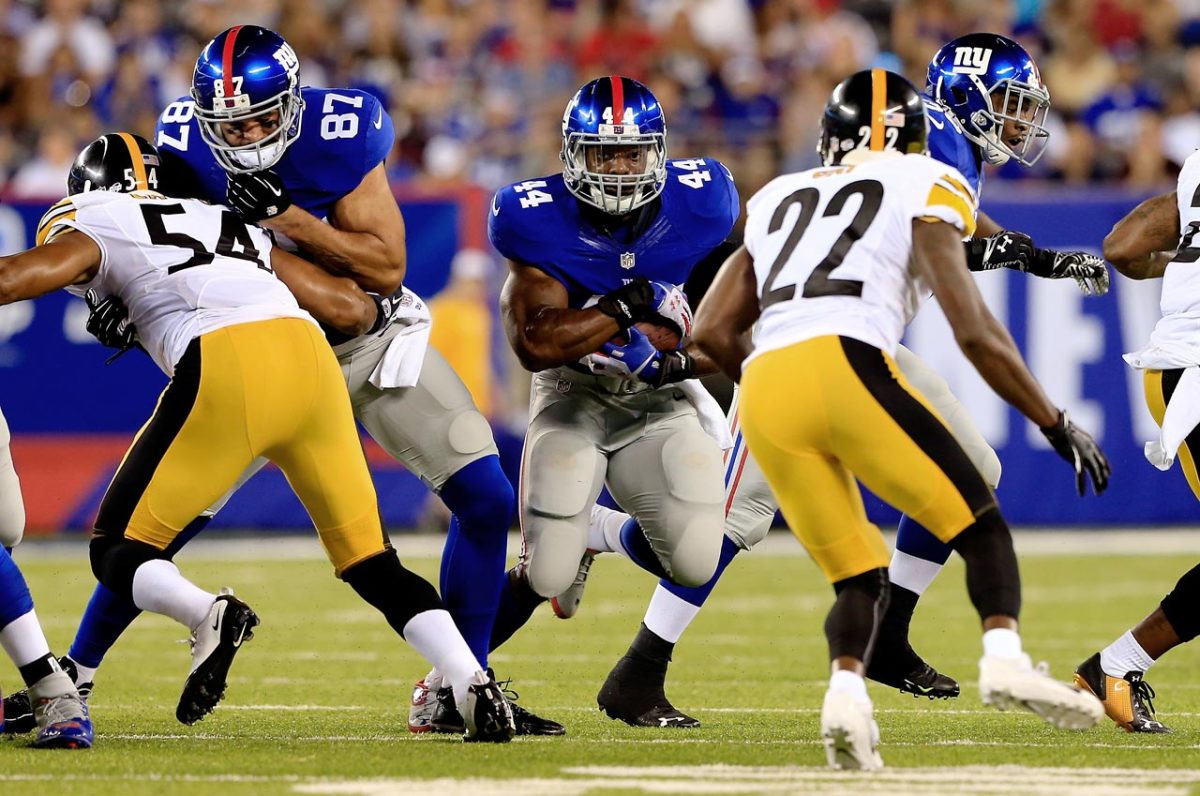
The rookie out of Boston College will take a backseat to Rashad Jennings early in the season but is talented enough to eventually steal the job. Either way, Williams is expected to be the goal-line back and fantasy owners should keep an eye on him.
Emmanuel Sanders - WR, Denver Broncos
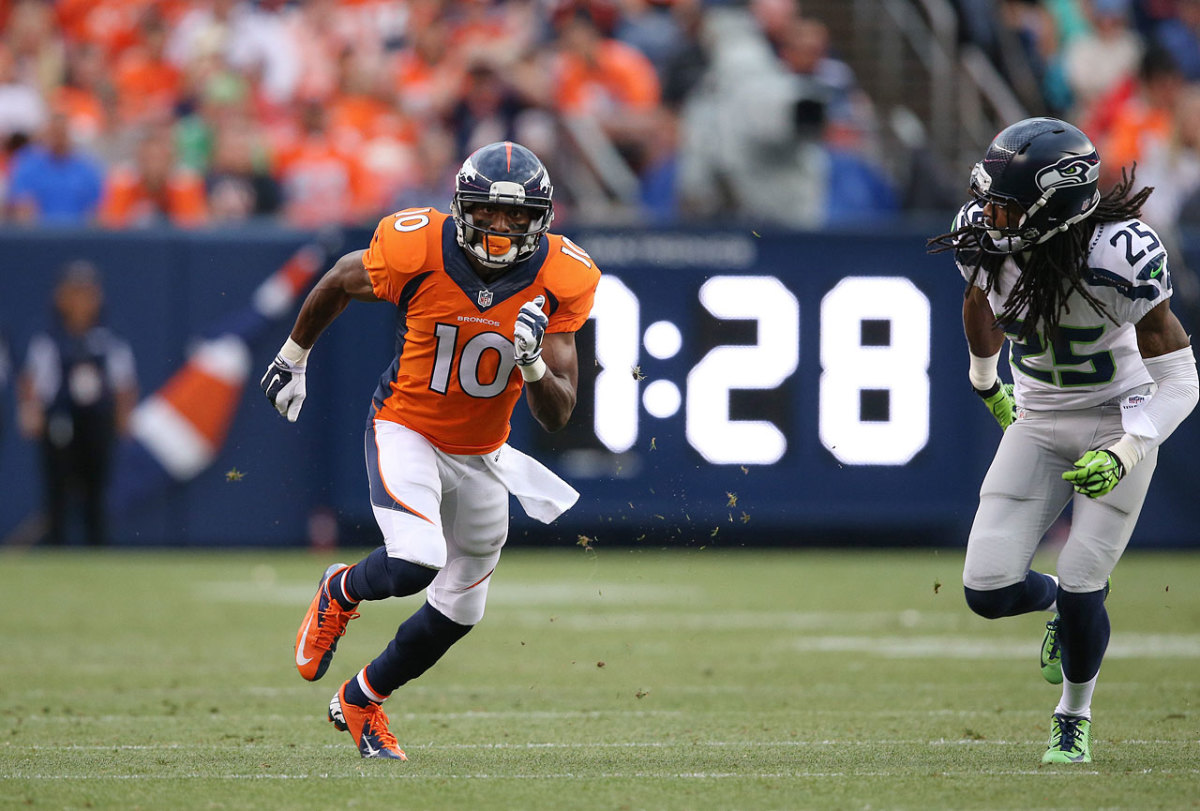
Peyton Manning has a new toy and that's great news for fantasy owners. Sanders has the skillset to make a significant impact as the Broncos’ third receiver.
Cole Beasley - WR, Dallas Cowboys
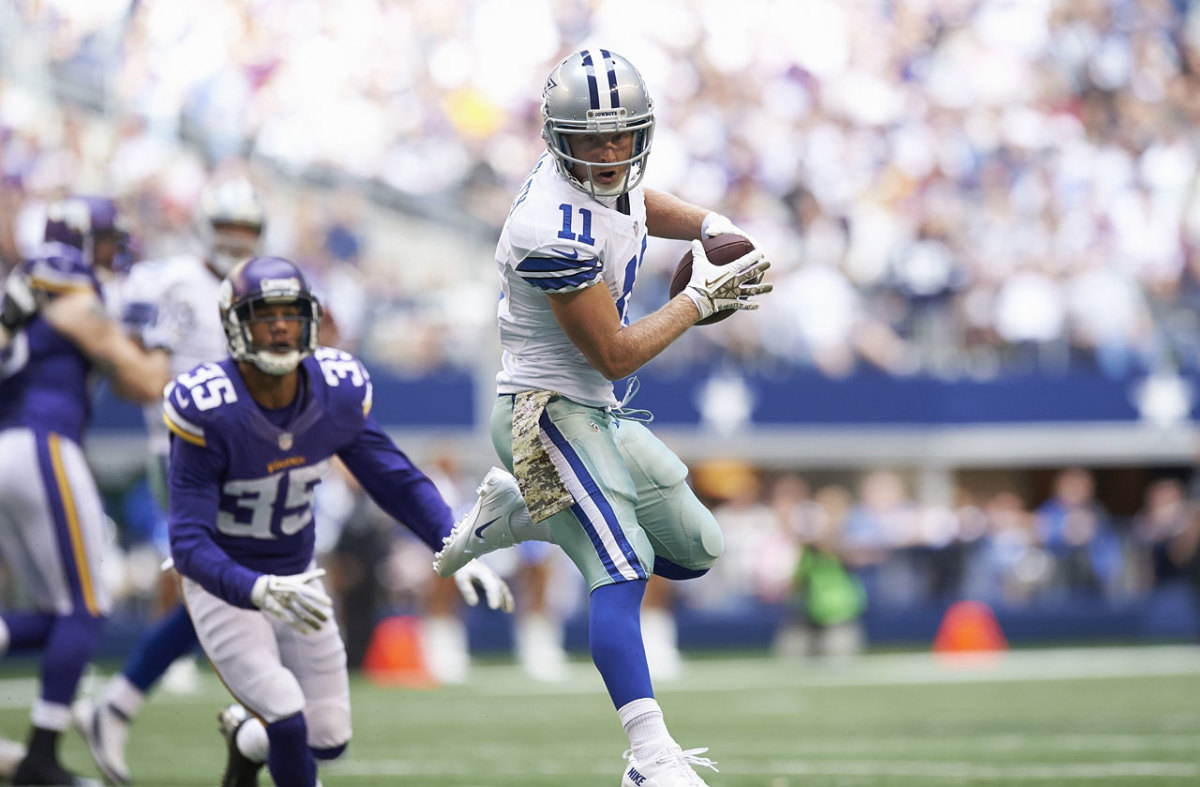
The Cowboys should have a dominant passing game and Beasley should be a capable slot receiver. He could emerge as one of Tony Romo’s favorite targets.
Odell Beckham - WR, New York Giants
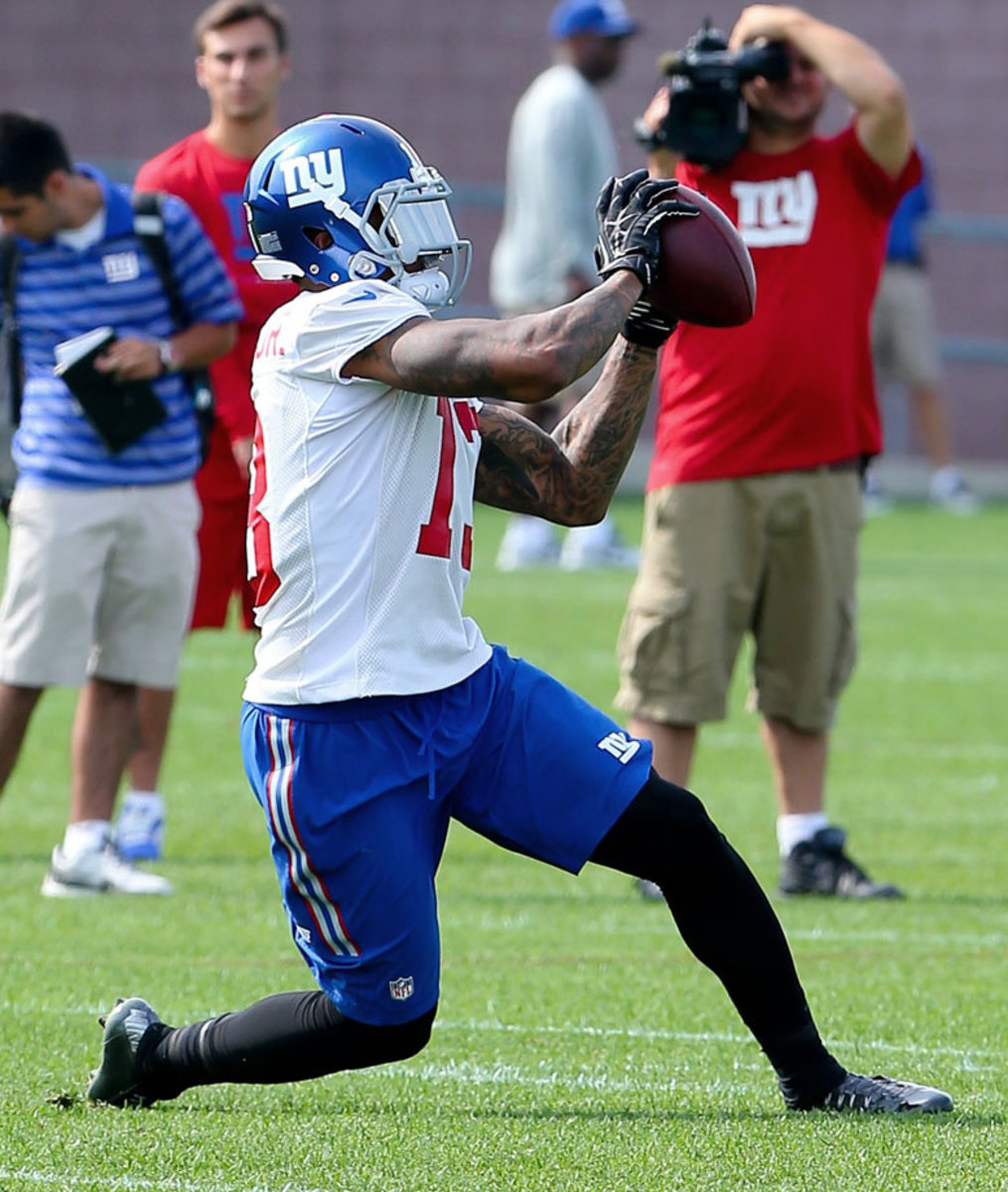
The rookie from LSU is expected to stretch the field for Eli Manning and could be a nice fantasy asset immediately. His average draft position should creep up as he proves healthy in camp.
Golden Tate - WR, Detroit Lions
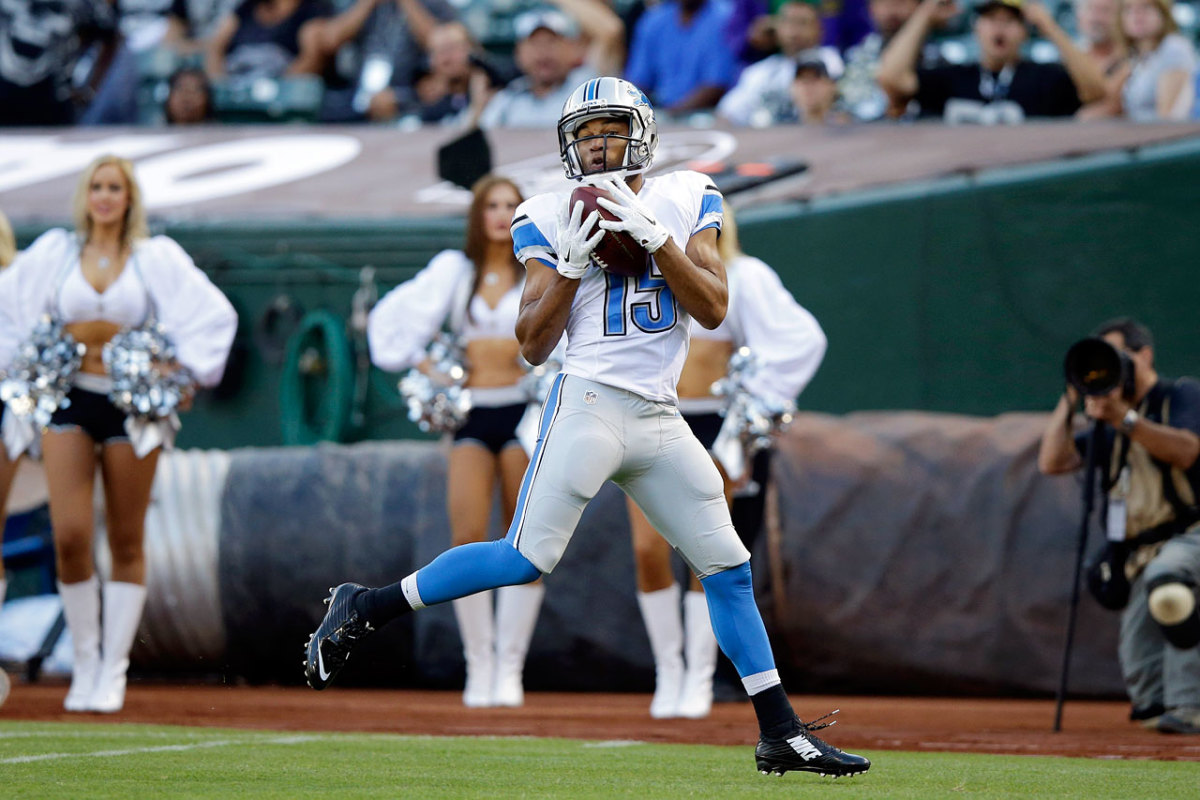
Tate moves to an up-tempo offense in Detroit and gets to play opposite Calvin Johnson, which is very good news for his fantasy appeal. He should be a nice WR3 facing single coverage on a weekly basis.
Mike Evans - WR, Tampa Bay Buccaneers
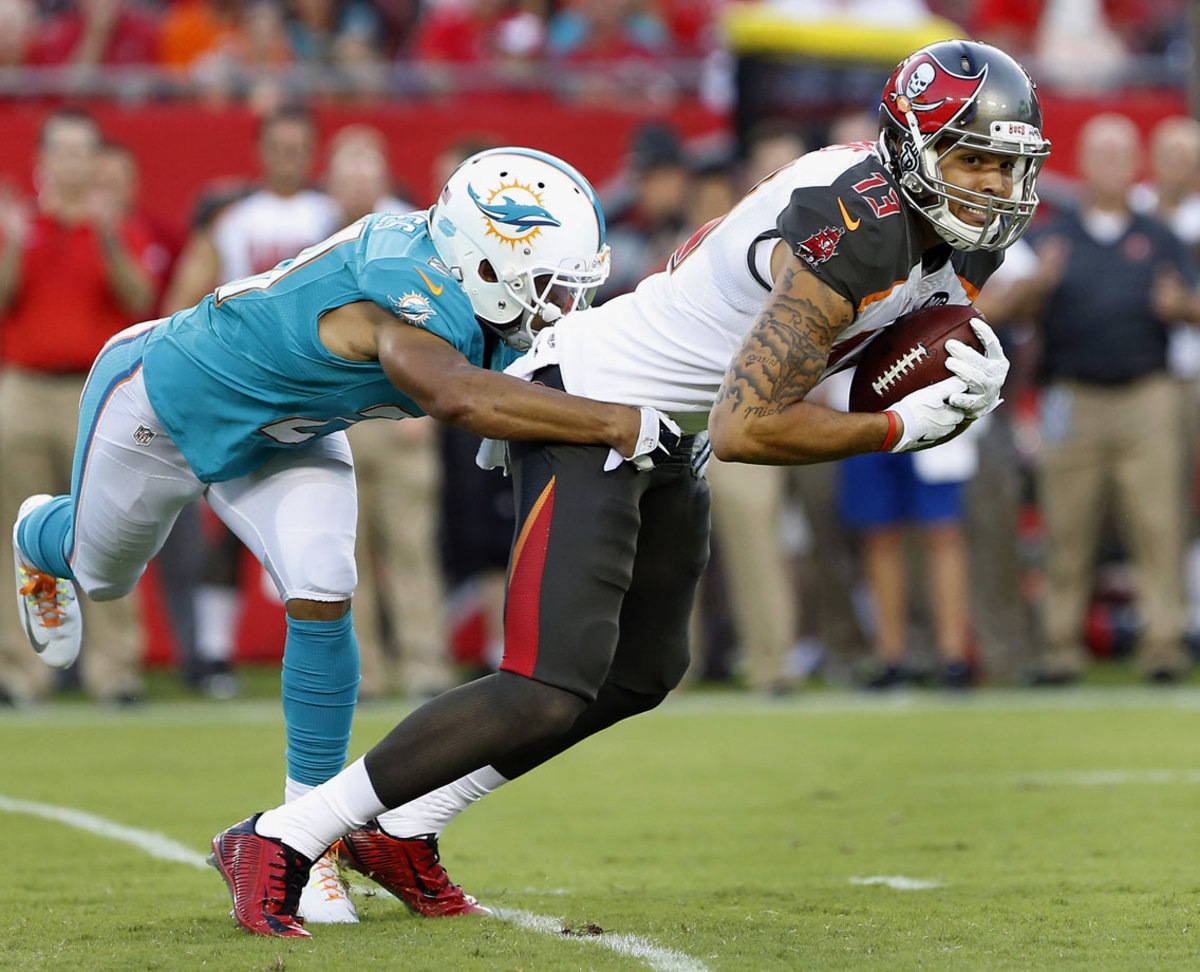
The No. 7 overall pick has lofty expectations and is in a great situation to succeed. The 6’5 Evans will find plenty of single coverage playing opposite Vincent Jackson and could be the league’s top rookie for fantasy purposes.
Charles Johnson - WR, Cleveland Browns
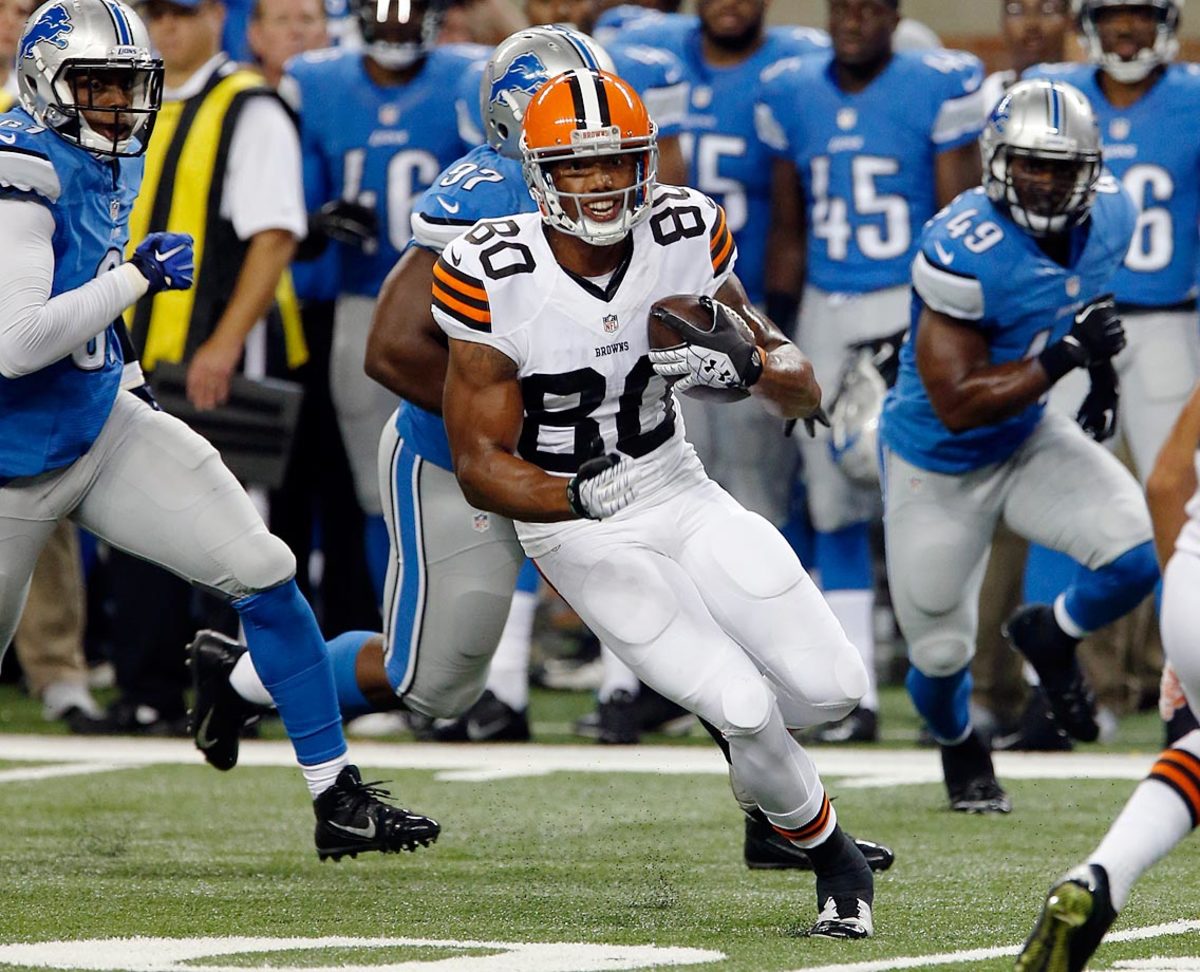
The Grand Valley State product has been a training camp standout and could emerge as a starter in Cleveland. The Browns will be desperate for a play-making WR once Josh Gordon starts serving his suspension.
Kyle Rudolph - TE, Minnesota Vikings
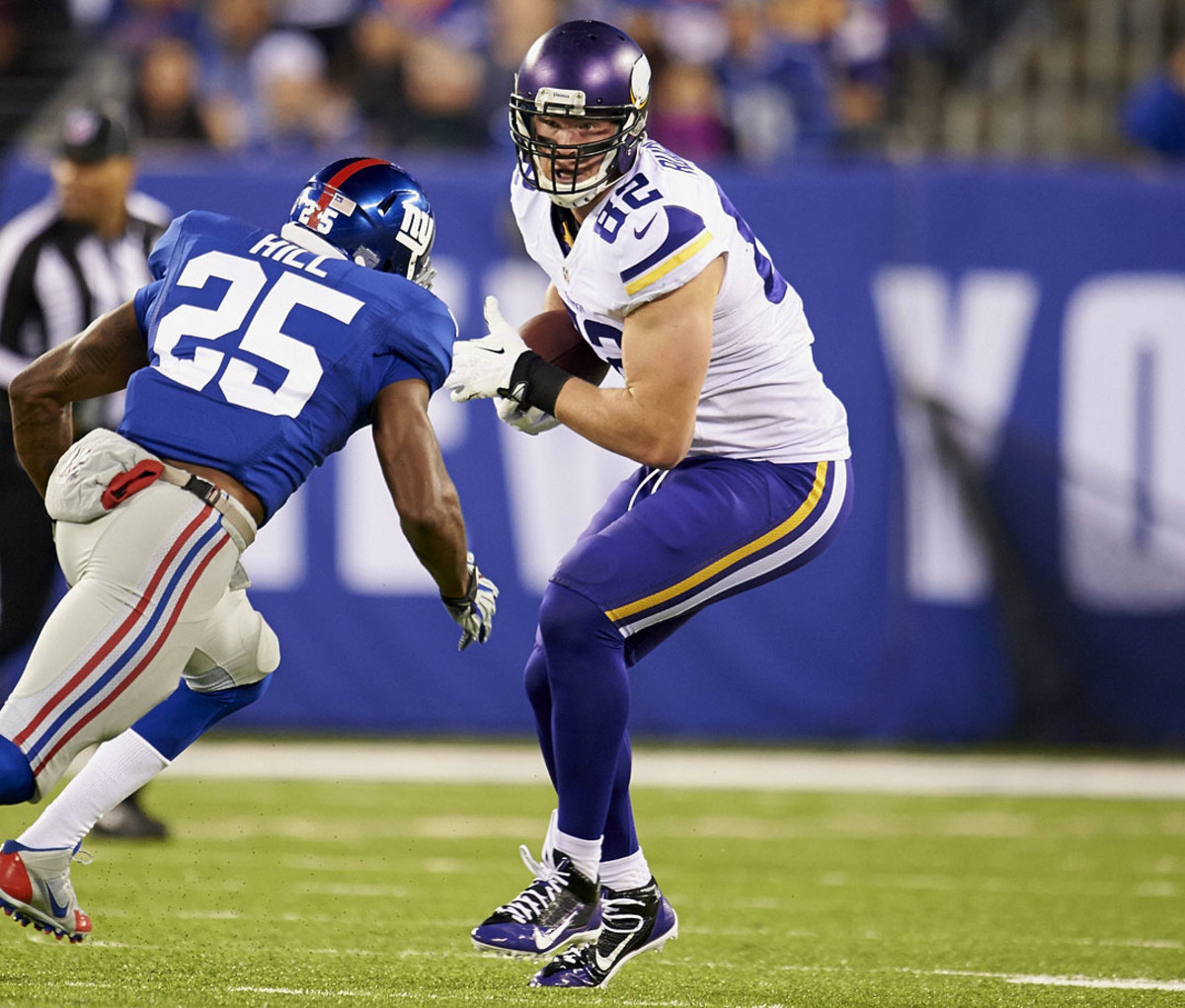
Rudolph isn’t necessarily a “sleeper,” but he could easily outperform his ADP. Norv Turner turns tight ends into fantasy stars and Rudolph is primed for a career-best season.
Jordan Reed - TE, Washington Redskins
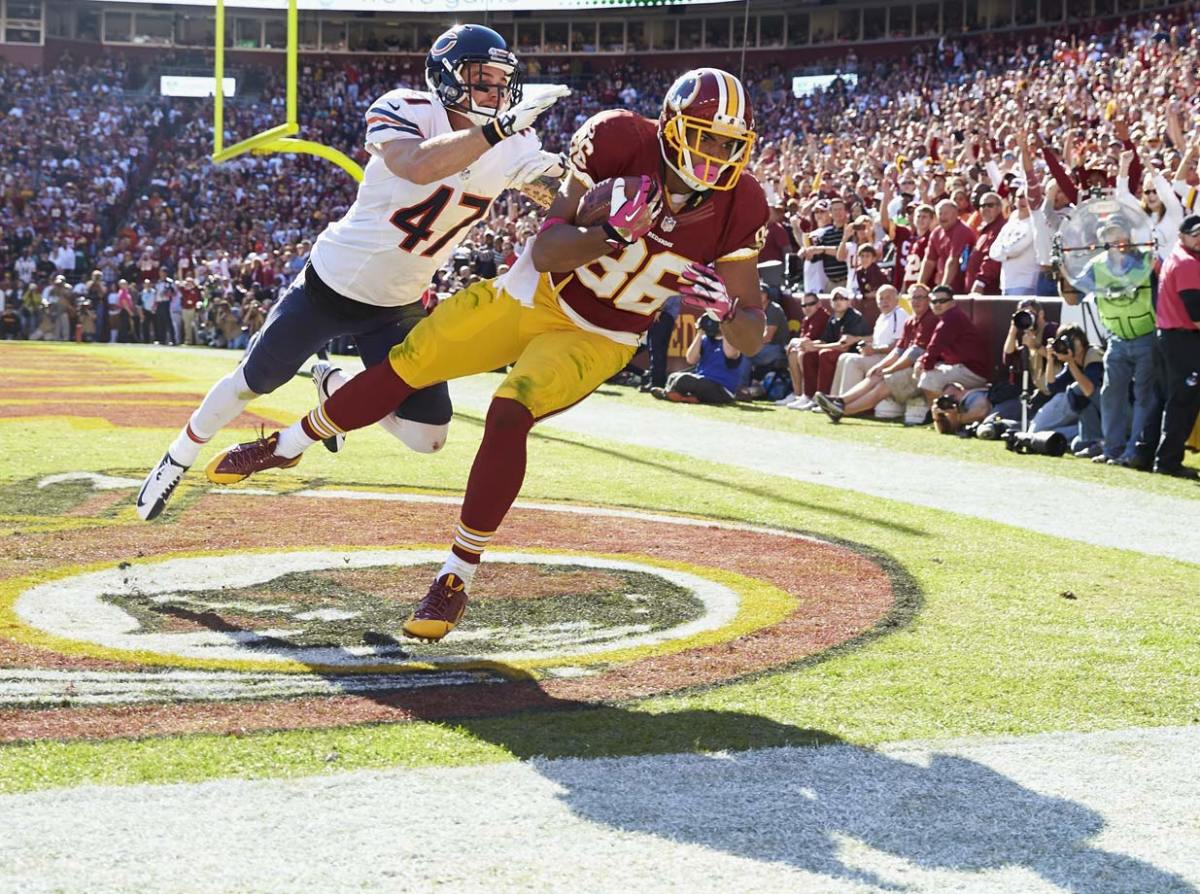
Reed showed glimpses of his potential last season, when he caught 45 balls in only nine games. The sky is the limit if Reed can stay healthy in 2014. He’s simply too talented to be overlooked.
Eli Manning - QB, New York Giants
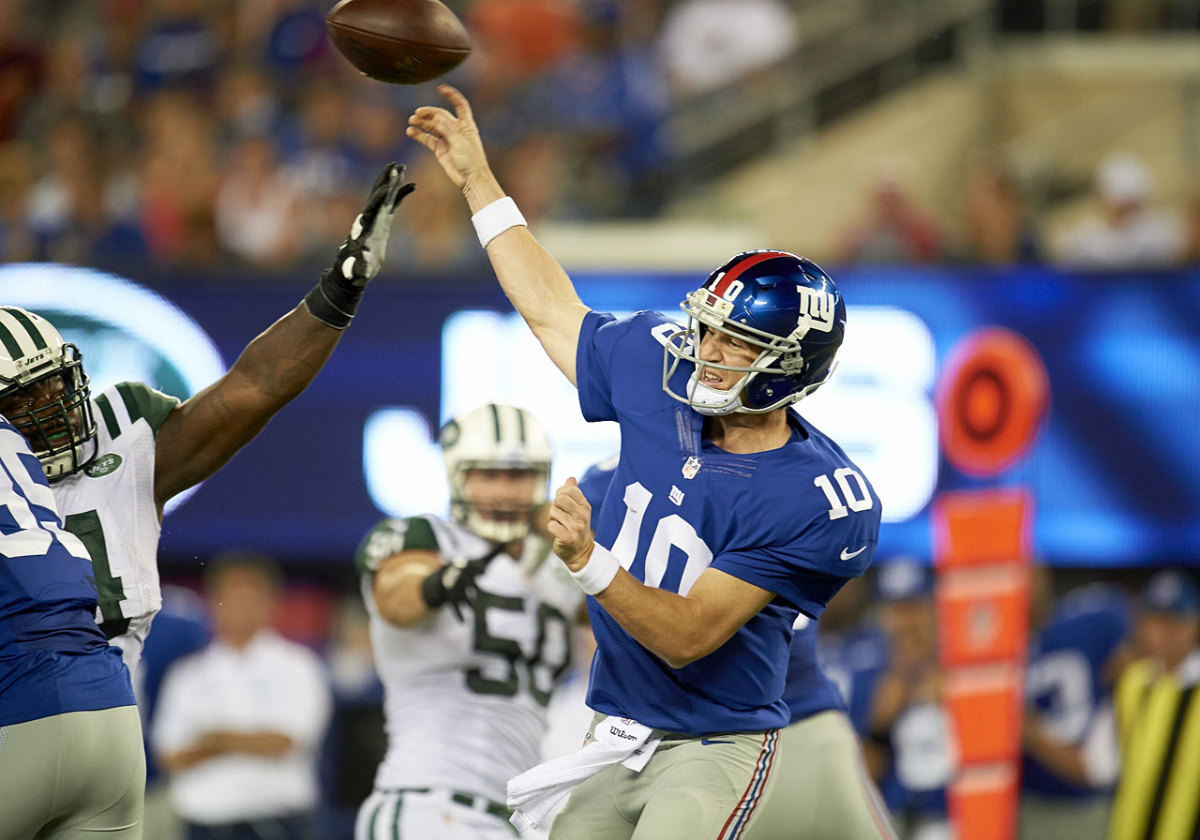
The younger Manning gets a fresh start with new offensive coordinator Ben McAdoo and he should improve upon his miserable 18/27 TD/INT ratio from 2013. You can draft him as a backup for fantasy purposes but he has the ability to sneak into the Top 12 QBs when the season concludes.
Andy Dalton - QB, Cincinnati Bengals
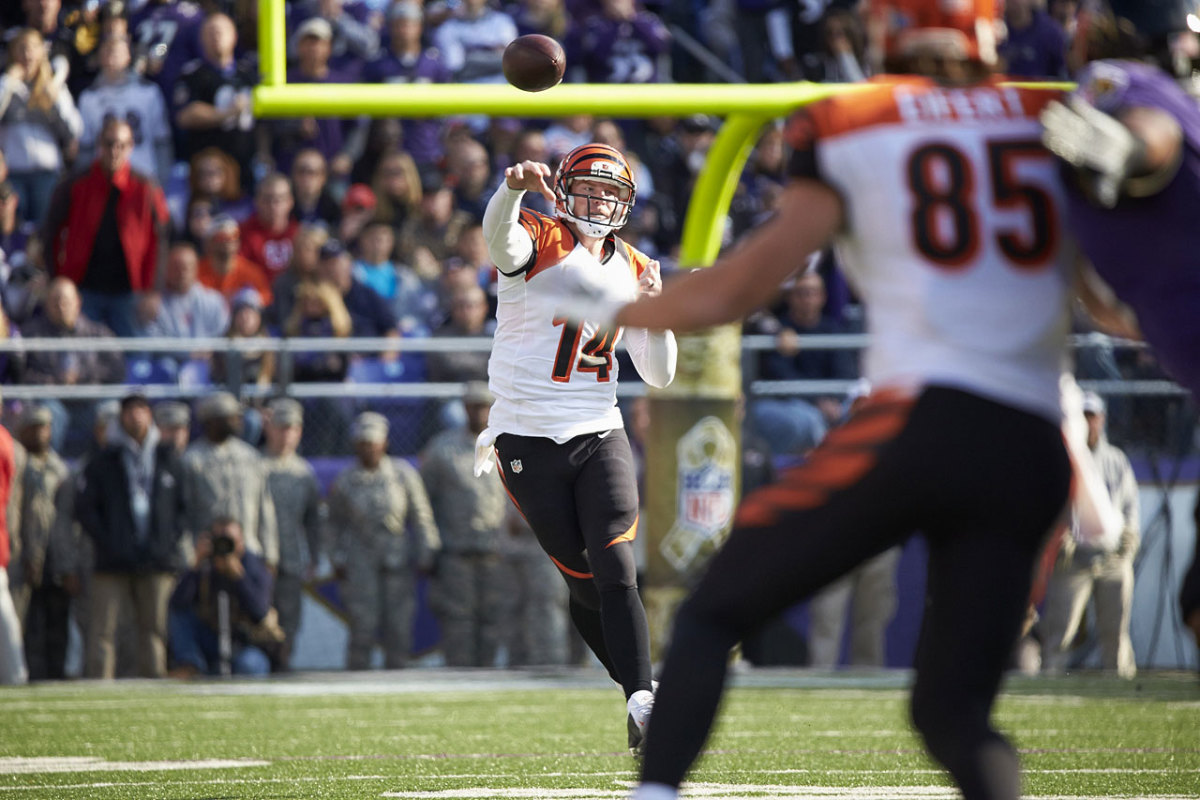
Dalton was quietly a fantasy monster last season, finishing with 4,293 passing yards and 33 TDs. Doubters will say Dalton is streaky, just signed a huge deal and has a new offensive coordinator, but, regardless, he is an absolute steal at his current ADP.
Josh McCown - QB, Tampa Bay Buccaneers
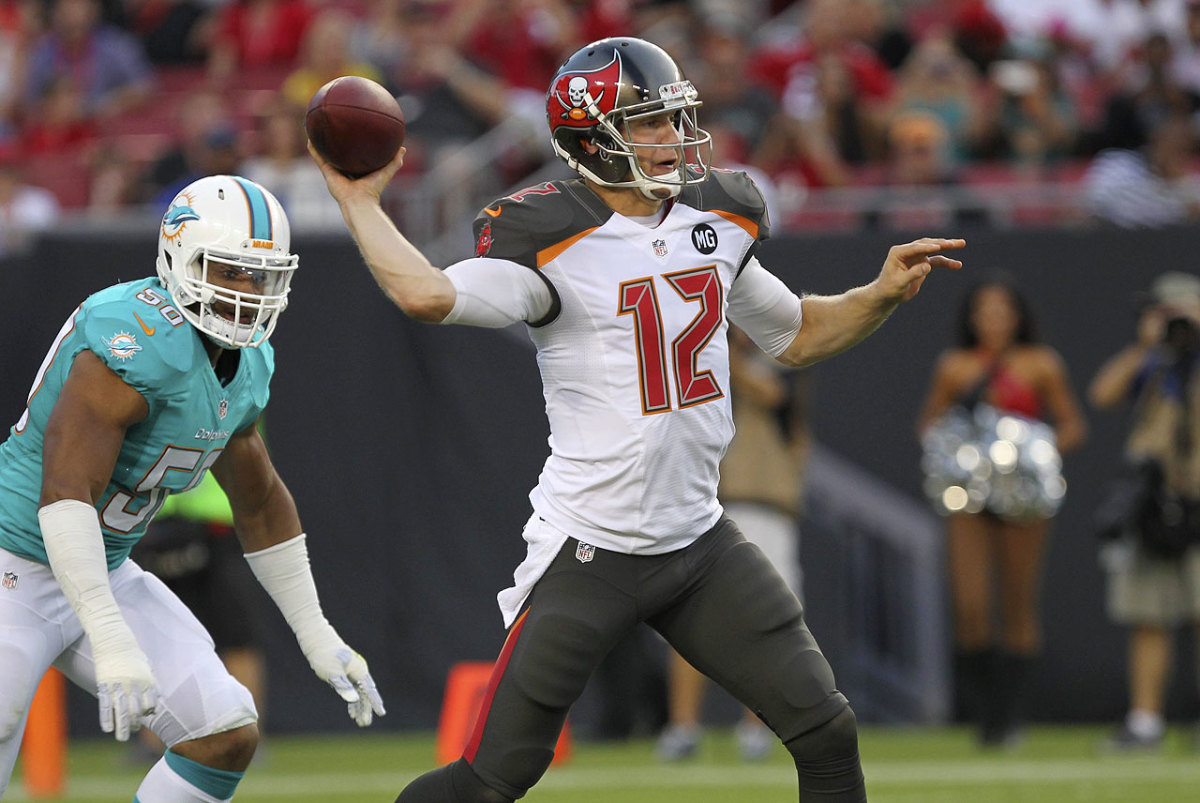
McCown was an elite fantasy QB during a three-game stretch last season and parlayed the success into a starting gig in Tampa Bay. His new weapons (Vincent Jackson and Mike Evans) resemble his old weapons (Brandon Marshall and Alshon Jeffery) in both size and ability. McCown is a sneaky option if you need a QB late in your draft.
However, that does not mean you need to shoehorn yourself into making suboptimal picks just because quarterbacks are flying off the board. Every draft room is different, and you’ll need to get a feel for what yours is like both before and during the action. If you can stay away from quarterbacks in the first three rounds, and still end up with two guys ranked in the 12-to-18 range – say, Jay Cutler and Andy Dalton – you can gain a huge advantage at the running back and receiver positions while fielding a starting roster that still has plenty of upside at quarterback. This won’t always be possible, but if it is, it’s my favorite strategy in two-QB leagues. It’s all about gauging the room and seeing just how much you can get away with before taking the plunge.
3. Respect the flexibility allowed by the elite
If you end up with Rodgers, Manning or Brees in a one-QB league, you don’t need to bother drafting a backup. In a two-QB league, the elite quarterbacks allow you to go cheap with your second passer because of the consistency they provide.
Fantasy football 2014 draft preview: 2nd-, 3rd-year players to watch
At this point, you’ve locked in a passer who will, at worst, likely be among the top five in the league. With this rock of production on the roster, you can focus on backs and receivers. Thanks to the increased price of quarterbacks, players at those positions that typically go in the second and third rounds will be pushed into the third and fourth. Then, when the middle rounds arrive, you can turn your attention back to the quarterback position. Even though about 18-to-20 quarterbacks are probably gone at this point, you will not suffer.
Last year, the following quarterbacks ranked 21st or lower in ADP: Nick Foles, Smith, Philip Rivers and Ryan Tannehill. All finished the season within the top 16 at the position. In terms of points per game, three more quarterbacks with an ADP of 21st or worse – Josh McCown, Ryan Fitzpatrick and Jake Locker – finished inside the top 24, or QB2 territory in 12-team leagues.
This is all to say that there will be quarterbacks selected late who end up finishing the season as worthy weekly starters in two-QB leagues. Having one of the elite guys allows you the flexibility to wait on your second quarterback, then grab two of the lottery tickets at the position. You probably won’t hit on both, but if you do hit on one, you’ll almost certainly have one of the best starting duos in your league.
Below are my rankings for two-quarterback leagues:
1. Aaron Rodgers
2. Peyton Manning
3. Jamaal Charles
4. Matt Forte
5. Drew Brees
6. LeSean McCoy
7. Adrian Peterson
8. Eddie Lacy
9. Calvin Johnson
10. Jimmy Graham
11. Demaryius Thomas
12. Matthew Stafford
13. Brandon Marshall
14. A.J. Green
15. Montee Ball
16. Matt Ryan
17. Le’Veon Bell
18. Julio Jones
19. Tom Brady
20. Jordy Nelson
21. Doug Martin
22. Dez Bryant
23. Robert Griffin III
24. Cam Newton
25. Alshon Jeffery
26. Marshawn Lynch
27. Nick Foles
28. Andrew Luck
29. DeMarco Murray
30. Alfred Morris
31. Antonio Brown
32. Giovani Bernard
33. Reggie Bush
34. Rob Gronkowski
35. Andre Ellington
36. Arian Foster
37. Jay Cutler
38. Tony Romo
39. Randall Cobb
40. Vincent Jackson
41. Pierre Garcon
42. Philip Rivers
43. Larry Fitzgerald
44. Roddy White
45. Andre Johnson
46. DeSean Jackson
47. Colin Kaepernick
48. Ryan Mathews
49. Victor Cruz
50. Julius Thomas
51. Rashad Jennings
52. Frank Gore
53. Ben Roethlisberger
54. Andy Dalton
55. Zac Stacy
56. C.J. Spiller
57. Toby Gerhart
58. Ben Tate
59. Keenan Allen
60. Wes Welker
61. Michael Floyd
62. Russell Wilson
63. Michael Crabtree
64. Torrey Smith
65. Shane Vereen
66. Jeremy Maclin
67. Chris Johnson
68. Ryan Tannehill
69. Kendall Wright
70. Percy Harvin
71. Bishop Sankey
72. Joique Bell
73. Cordarrelle Patterson
74. Carson Palmer
75. Stevan Ridley
76. Steven Jackson
77. Marques Colston
78. T.Y. Hilton
79. Reggie Wayne
80. Trent Richardson
81. Pierre Thomas
82. Bernard Pierce
83. Eric Decker
84. Ray Rice
85. Golden Tate
86. Emmanuel Sanders
87. Fred Jackson
88. Jake Locker
89. Vernon Davis
90. Jordan Cameron
91. Lamar Miller
92. Alex Smith
93. Eli Manning
94. Terrance Williams
95. Sam Bradford
96. Joe Flacco
97. Brandin Cooks
98. Josh McCown
99. Terrance West
100. Julian Edelman
